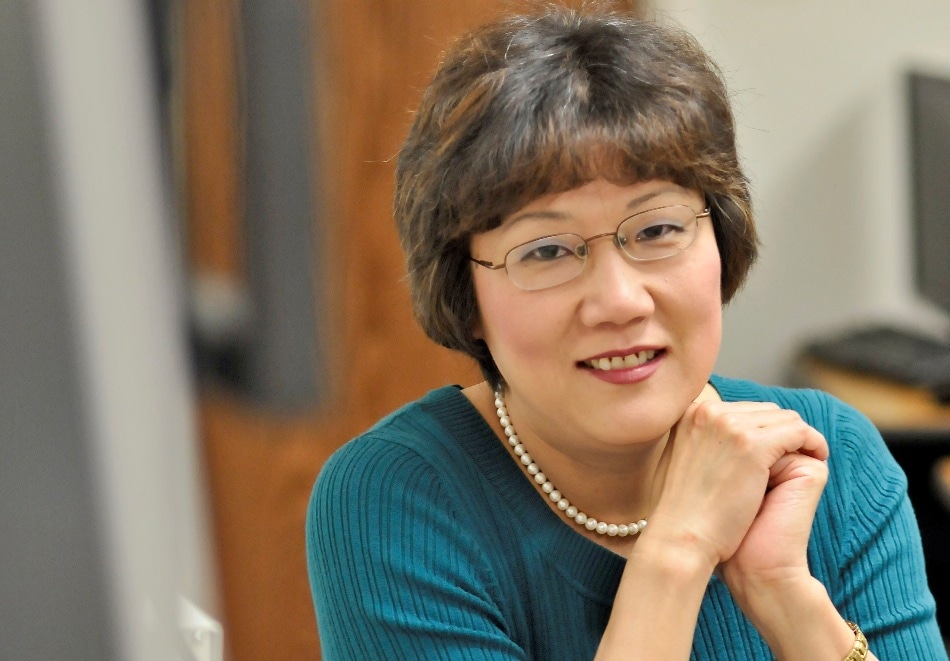May 30 2019
At The University of Texas at Arlington (UTA), bioengineering professor Hanli Liu is directing near-infrared laser light to astronauts’ brains in an effort to improve their cognitive and memory function during space missions.
 This is Hanli Liu, professor of bioengineering at The University of Texas at Arlington. (Image credit: The University of Texas at Arlington)
This is Hanli Liu, professor of bioengineering at The University of Texas at Arlington. (Image credit: The University of Texas at Arlington)
Liu and Jacek Dmochowski, assistant professor of bioengineering at the City University of New York, are co-primary investigators on an $800,000 NASA grant that will deliver an innovative light-based technology to boost the energy available to brain cells and thus enhance the performance of astronauts. UTA will share $321,608 in the NASA grant for a period of two years.
Liu investigates how lasers need to be used to direct near-infrared light human brain to detect symptoms of post-traumatic stress disorder and also to identify traumatic brain injuries. As a matter of fact, her latest study has widened to explore the neurophysiological principle of near-infrared laser light, delivered in a non-invasive manner, to enhance cognitive functions in humans. The research has provided a better understanding of how laser light can activate mitochondria, which are considered the powerhouses within cells, into producing more amounts of oxygen in the human brain to boost cerebral metabolism and thus reduce memory loss.
With the latest grant, Liu will explore whether light-emitting diodes (LEDs) can substitute lasers as the delivery technique for near-infrared light. In particular, she will find the duration and range of the wavelength required to create the preferred effects.
Lasers are usually bulky and heavy, and would occupy a large amount of space in the confined quarters of a space station or spacecraft. By contrast, LEDs are smaller and lighter and can be fixed to a headband or analogous device that can be stored more easily. When compared to light from lasers, light delivered by LEDs is also safer to human eyes.
LED light in the near-infrared and red range is already being used extensively for treating acne and relieving pain, albeit few investigators have thoroughly examined its limitation and viability for increasing and stimulating the metabolism of the brain.
Researchers have evidence that memory can be improved right after shining light on specific areas of the human brain for eight to 10 minutes. We are trying to demonstrate that if we can increase power in LEDs within safe levels, we can make LED light reach the cortex, just like a laser, but safer, smaller, easier and more portable to use.
Hanli Liu, Professor, Department of Bioengineering, The University of Texas at Arlington
Michael Cho, Chair of the Bioengineering Department, informed that Liu’s latest study is an example of health and the human condition and data-driven discovery—two themes of UTA’s Strategic Plan 2020: Bold Solutions | Global Impact.
Workplace pressure is difficult to deal with on Earth, but adding the stressors of an environment such as space can have negative effects and impacts on performance and memory. Dr. Liu’s research has made important strides in this area, and if she is successful, her work on this new grant could be a crucial component of long-duration space exploration.
Michael Cho, Chair, Department of Bioengineering, The University of Texas at Arlington
Liu’s new technology-based research and development is associated with non-invasive transcranial infrared brain stimulations (TIBS). Earlier in 2016, Liu headed a group that published a revolutionary research in Nature’s Scientific Reports describing the fundamental principle of TIBS, and this was followed by another high-impact article reported in the Journal of Cerebral Blood Flow and Metabolism. This publication was the one which initially demonstrated that TIBS can considerably enhance blood oxygenation, blood flow, and metabolic activity in the human brain.
In collaboration with Alexa Smith-Osborne, a retired UTA associate professor of social work, Liu utilized functional near-infrared spectroscopy in order to map brain activity responses at the time of cognitive task performance associated with memory retrial and digit learning. This unique optical mapping technique allows clinicians and/or neural scientists to “see” where memory actually lapses within the brains of student veterans suffering from post-traumatic stress disorder.